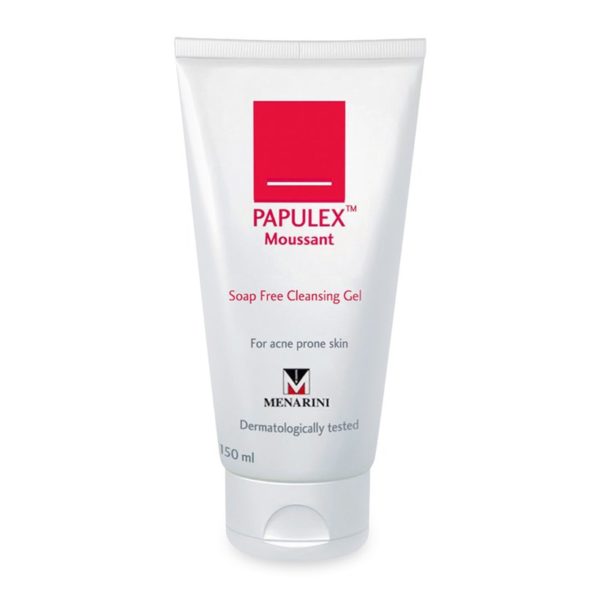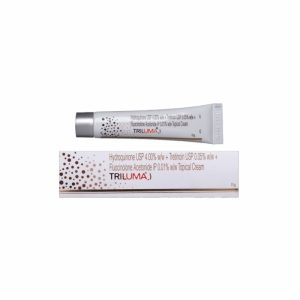Papulex Sữa Rửa Mặt Papulex Ngăn Ngừa & Giảm Mụn Trứng Cá Moussant Soap Free Cleansing Gel 150ml
380,000₫
Sữa rửa mặt Papulex Moussant Soap Free Cleansing Gel với công thức nhẹ dịu cho da giúp hỗ trợ cải thiện làn da chỉ sau thời gian ngắn sử dụng. Sản phẩm hiện được các bác sĩ chuyên khoa da liễu tại Pháp đánh giá cao.
Papulex Sữa Rửa Mặt Papulex Ngăn Ngừa & Giảm Mụn Trứng Cá Moussant Soap Free Cleansing Gel 150ml
Một trong những giải pháp hiệu quả nhất trong quá trình chiến đấu với mụn trứng cá chính là làm sạch mặt bằng sữa rửa mặt. Chính vì vậy, việc lựa chọn sản phẩm phù hợp và không làm tổn thương da mụn luôn là ưu tiên hàng đầu của những cô nàng da mụn. Sữa Rửa Mặt Ngăn Ngừa Trứng Cá Moussant Soap Free Cleansing Gel thuộc dòng dược phẩm của Papulex được thiết kế đặc biệt để giữ cho da mụn luôn ở trong tình trạng tốt nhất qua 3 bước: làm sạch, và bảo vệ là sản phẩm bạn nên thử qua một lần. Sản phẩm được các bác sĩ da liễu khuyên dùng và nhận được nhiều reviews tích cực từ các blogers nổi tiếng ở trong nước và cả thế giới nhờ tính hiệu quả mà nó mang lại.
Sữa Rửa Mặt Ngăn Ngừa Trứng Cá Moussant Soap Free Cleansing Gel là bước đầu tiên và cũng là bước quan trọng nhất trong chu trình chăm sóc da. Sản phẩm giúp làm giảm sự xuất hiện của mụn trứng cá, duy trì cảm giác tươi mát và dễ chịu cho da. Đặc biệt, sản phẩm giúp làm mịn da và công thức kiềm dầu giúp da không bóng nhờn mà vẫn giữ được độ ẩm cần thiết cho da. Papulex nổi tiếng với các sản phẩm chứa 3 tác động làm giảm mụn và bảo vệ da, bao gồm: phức hợp ABA, Nicotinamid 4%, Kẽm PCA giúp giảm mụn nhanh, đảm bảo an toàn cho làn da.
– Phức hợp ngăn ngừa vi khuẩn bám dính ABA (Anti Bacterial Adhesive Substance): ngăn chặn vi khuẩn gây mụn Propionibacterium acnes (P.acnes) bám dính vào lớp tế bào nằm trên bề mặt da. Chặn đứng sự tăng sinh của vi khuẩn P.acnes.
– Niacinamide 4%: là phân tử tự nhiên, dẫn xuất của Vitamin B3.có đặc tính kháng viêm, giúp làm dịu, cải thiện mụn nhờ tác động ức chế sản sinh bạch cầu và các enzyme lysosome làm hại thành nang lông. Ngoài ra, thành phần này không dẫn đến hiện tượng đề kháng của vi khuẩn.
– Kẽm PCA (Pyrrolidone Carboxylic Acid): giảm sự bài tiết bã nhờn, giảm hiện tượng bóng dầu, không gây khô da giúp da được mịn màng, êm dịu hơn.
Ngoài ra, Sữa Rửa Mặt Ngăn Ngừa Trứng Cá Moussant Soap Free Cleansing Gel Papulex với thành phần tự nhiên không gây bít lỗ chân lông, không gây mẫn cảm với ánh nắng, không tạo cồi mụn, không paraben và không chứa hương liệu nên bạn có thể yên tâm sử dụng.

1. Công dụng:
– Giúp làm giảm mụn, đồng thời nhẹ nhàng làm sạch da với công thức không chứa xà phòng.
– Làm sạch da, ngăn ngừa mụn.
2. Thành phần:
Nước, decyl glucoside, glycerin, cocamidopropyl, hydroxysultane, niacinamide, PPG-14 Palmeth-60 Hexyl Dicarbamate, TEA-lauryl sulfate, sorbitol, lauryl polyglucose, citric acid, pafum, disodium phosphate, DMDM hydanton, disodium EDTA, iodopropynyl butylcarbamate, Cl 42090, Cl 19140.
3. Hướng dẫn sử dụng:
– Làm ướt vùng da bị mụn (mặt, cổ, lưng ngực)
– Lấy 1 lượng vừa đủ sản phẩm thoa lên mặt, tránh tiếp xúc với mắt
– Dùng các ngón tay để xoa nhẹ nhàng tạo bọt, rửa lại thật kỹ với nước và nhẹ nhàng lau khô.
– Sản phẩm dạng gel, không chứa xà phòng, có thể dùng để tắm.
– Sử dụng 2 lần/ngày (1 lần buổi sang, 1 lần buổi tối) và sau khi ra mồ hôi.

Related products
MỸ PHẨM CHĂM SÓC DA
Kem tẩy da chết dành cho mặt chiết xuất cà phê Organic Shop của Nga ( 75ml) – HÀNG CHÍNH HÃNG







